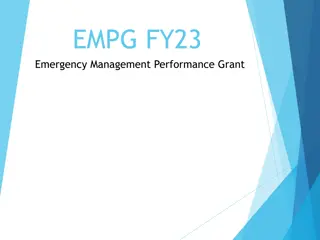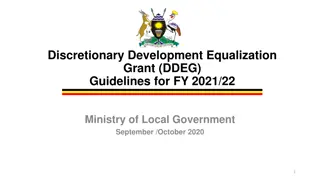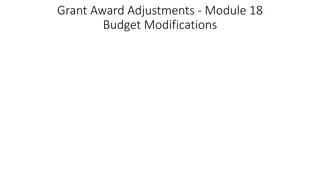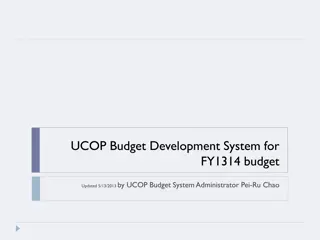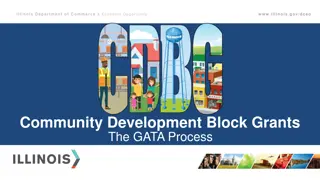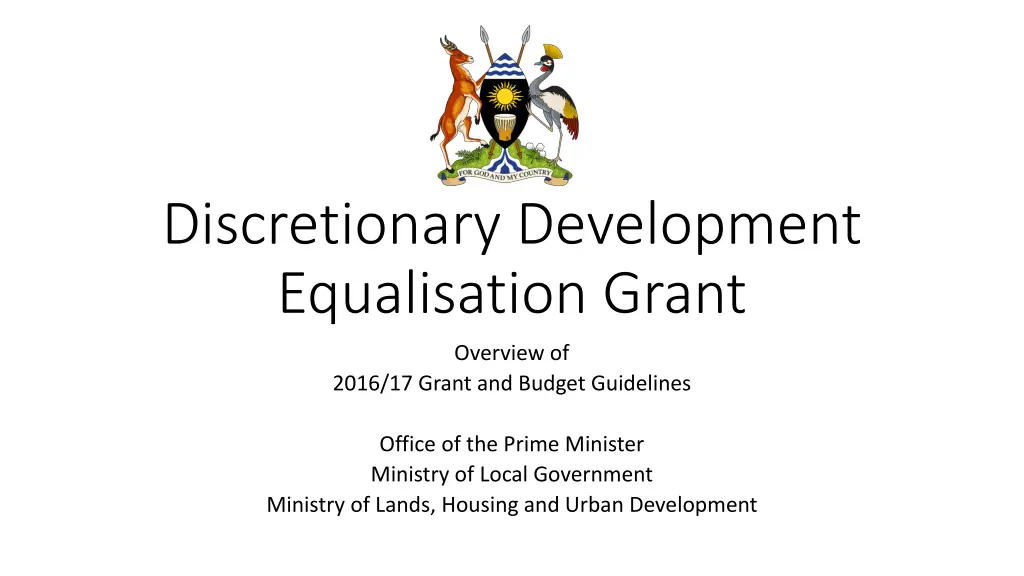
Discretionary Development Equalisation Grant Overview: Policy Priorities and Key Variables
Explore the overview, policy priorities, and key variables associated with the Discretionary Development Equalisation Grant for local governments, focusing on equitable subnational development, sector objectives, allocation formulae, and more based on the 2016/17 guidelines.
Download Presentation

Please find below an Image/Link to download the presentation.
The content on the website is provided AS IS for your information and personal use only. It may not be sold, licensed, or shared on other websites without obtaining consent from the author. If you encounter any issues during the download, it is possible that the publisher has removed the file from their server.
You are allowed to download the files provided on this website for personal or commercial use, subject to the condition that they are used lawfully. All files are the property of their respective owners.
The content on the website is provided AS IS for your information and personal use only. It may not be sold, licensed, or shared on other websites without obtaining consent from the author.
E N D
Presentation Transcript
Discretionary Development Equalisation Grant Overview of 2016/17 Grant and Budget Guidelines Office of the Prime Minister Ministry of Local Government Ministry of Lands, Housing and Urban Development
Overview 1. Sector Objectives 2. Structure and Purpose of Sector Transfers 3. Allocation Formulae 4. Budget Requirements 5. Service Delivery Units / etc 6. Other Sectoral Issues 2
Policy Priorities In order to ensure equitable subnational development across the country, Article 193 (4) of the Constitution provides for subsidies or special provisions for the least developed districts based on the degree to which a Local Government unit is lagging behind the national average standard for a particular service. Special regional programmes such as the PRDP and the LRDP which are intended to support areas of the country with specific development needs will use harmonised country systems. 3
Structure and Purpose of Sector Transfers Grant District Discretionary Development Equalisation Grant o/w PRDP and LRDP Districts Purpose - - - Address development needs of rural areas Provide discretion to LGs to fund priorities Increase adequacy of funding whilst giving preferential treatment to LGs that are lagging behind o/w PRDP and LRDP Sub- counties o/w Other District Development o/w Other Development Urban Discretionary Development Equalisation Grant o/w Municipal USMID Sub-county - - - Address development needs of urban areas Provide discretion to LGs to fund priorities Increase adequacy of funding whilst giving preferential treatment to LGs that are lagging behind o/w Municipal non USMID o/w Division non USMID o/w Town Councils 4
Key Variables Used in Allocation Formulae Variable Justification Conflict Constant (fixed allocation) Rural Population / Urban Population Allocate more resources to LGs severely affected by conflict Ensure that Higher and Lower LGs have minimum allocations for construction of meaningful infrastructure Provide for demand/scale of delivering services Equalizing variables - to allocate greater resources to districts that lag behind as per article 193 (4) of the Constitution. Poverty Head count 5
Overview of Budget Requirements Area DDEG Allocations across categories Requirement/Principle Allocations to livelihoods development, including community driven/based development minimum 10% Allocations to the administrative departments maximum 15% DDEG funds allocated to each workplan will be compliant with the relevant sectoral budget requirements. Direct allocations and transfers will be made to lower local governments. For the district component, sub-county DDEG allocations must be consistent with the indicative allocations provided by MoFPED. For the urban component, the non USMID DDEG allocations to the Municipal Level and Town Councils must be in line with indicative allocations. Note: A schedule of allocations of the DDEG to Town Councils and Sub-Counties accompanies the IPFs for Local Governments. A LG will spend maximum 10% of its combined sector development budget allocations for capacity development. A minimum of 65% of the GOU development budget is spent on capital investment. DDEG Allocations to LLGs Overall Dev t Budget 6
Other Development Budgeting Principles Area Principles for selecting Investments Requirement/Principle The principles for selecting all Local Government Investments (whether funded from the DDEG, Sector Development Grants or other sources) mean that investments should be: Within the mandate of LGs and in the approved LG development plan and budget Can be completed with the resources in the budget and made fully functional Accompanied by provisions for recurrent cost implications Focus on public rather than private goods, and should not have negative private and social impacts Are in compliance with Sector Budgeting Requirements for each Workplan Capacity development maximum 10% The funds for capacity building will be used for: (i) discretional skills development minimum 80%; and (ii) career development for technical staff which are a requirement for confirmation or promotion maximum 20% Capacity Development 7
Other Issues for the DDEG PRDP, LRDP, USMID issues 9




